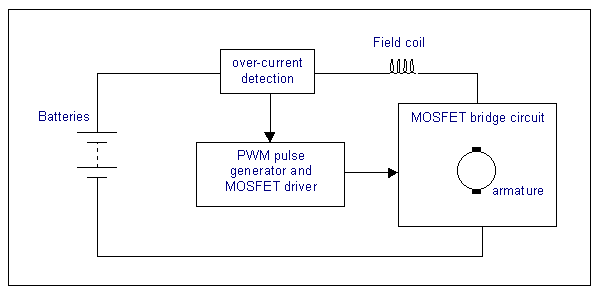Average and rms thyristor current
SCENARIO
The unit has the following learning outcomes
1 Understand common configurations for controlled and uncontrolled rectification
Understand common configurations for controlled and uncontrolled rectification
The current wave form when an inductor is added to the load
How freewheeling diodes connected across the load improve the performance of the rectifier
3)
a) Explain methods of device protection. Investigate different device protection methods such as crowbar, clamping, MOV and snubber circuit. Compare and evaluate these protection circuits.
The circuit above shows a simple DC control circuit that is to be used to control the speed of a DC motor using complementary transistors, you are required to produce a report on the operation of the above identifying the current and voltage waveforms across each of the transistors and identify the major disadvantage of such a circuit.
The circuit shown below shows the principle components of DC speed controller using Pulse Width Modulation techniques you are required to produce a report on the operation of the circuit your report should include

The diagram below shows the arrange of two thyristor bridge rectifiers that are to be used to control the speed of DC motor that is to be used for rolling steel which requires control in all four quadrants. You are required to produce a report discussing
Identify the proposed advantages and disadvantages of using a DC chopper circuit fed from a three phase bridge rectifier.
What type of devices can be to measure the High DC currents required by the motor.
The advantages of high power induction motors over DC drives.
6) In the figure below, A 6 pulse converter connected to 415 V ac supply is controlling a 440 V dc motor is presented. Find the angle at which the converter must be triggered so that the voltage drop in the circuit is 12% of the motor rated voltage. (M1)
